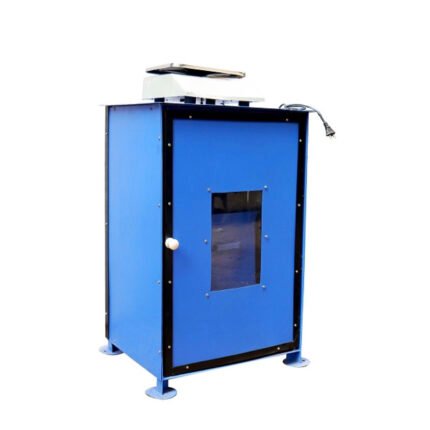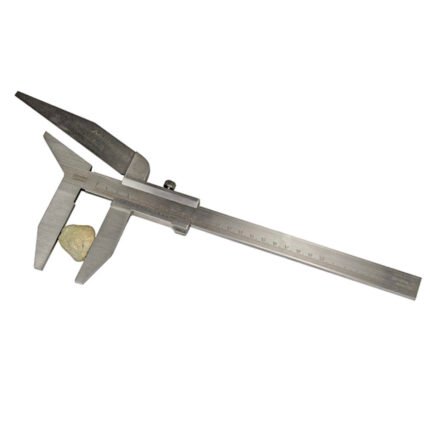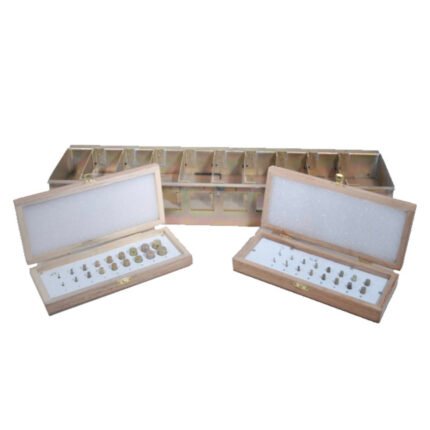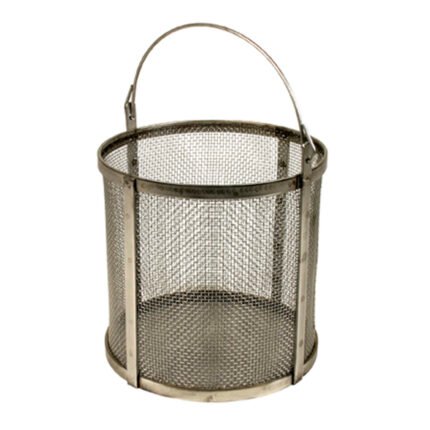Description
The AZA 0981 Riffle Sample Divider from Azalab is a precision-engineered instrument used for splitting large soil and aggregate samples into smaller, representative parts. Essential for laboratory material testing, this device is a reliable solution to ensure unbiased sample division, especially when preparing specimens for sieve analysis, specific gravity tests, and other construction material evaluations.
Constructed from high-grade mild steel with a durable powder-coated finish, the AZA 0981 is widely used in civil engineering laboratories, construction material testing units, geotechnical labs, and field testing stations.
🔍 Why Use a Riffle Sample Divider?
Aggregate and soil test results are only as reliable as the representativeness of the sample. Improper sampling introduces variability, which leads to inaccurate test results. The riffle box method is widely accepted by global standards for its accuracy and repeatability. The AZA 0981 simplifies and standardizes this step.
It is particularly useful for:
-
Fine and coarse aggregates
-
Granular soils
-
Cement and powder mixes
-
Recycled construction material
🛠️ Design and Functionality
The AZA 0981 consists of multiple fixed-width chutes arranged alternately in two directions. When a bulk sample is poured into the top, it gets evenly split into two portions by falling alternately through each chute into two separate pans positioned below.
This equal distribution ensures that both resulting sub-samples are statistically identical, allowing you to choose either for lab testing and retain the other for reference.
🌟 Key Features
-
Slot Width Options: Available in various slot widths to suit different aggregate sizes
-
Symmetric Chute Layout: Guarantees even division with minimal dust loss
-
Robust Frame: Heavy-duty steel construction ensures long-term use
-
Collection Pans Included: Two galvanized or stainless steel pans provided
-
Simple Operation: No electrical components, easy to clean and transport
🔗 External Resources (Follow Links)
-
ASTM C702 Standard for Reducing Field Samples of Aggregate:
-
IS 2430 Methods for Sampling of Aggregates:
-
Understanding the Use of Riffle Sample Divider – The Constructor:
⚙️ Specifications
| Specification | Details |
|---|---|
| Model | AZA 0981 |
| Material | Powder-coated mild steel |
| Number of Chutes | 12 to 24 (based on model configuration) |
| Chute Width Options | 12 mm, 16 mm, 25 mm (custom options available) |
| Collection Pans | 2 galvanized/stainless steel pans included |
| Complies With | IS 2430, ASTM C702, BS 812 |
| Dimensions | Approx. 450 × 300 × 500 mm |
| Weight | Approx. 22–28 kg |
🏗️ Applications
-
Construction Site Material Quality Control
-
Civil Engineering and Geotechnical Labs
-
Soil Mechanics and Aggregates Research
-
Educational Institutions
-
Road & Highway Department Testing
❓ Frequently Asked Questions (FAQ)
Q1: Can this be used for fine sand and powders?
A1: Yes, if equipped with narrow-width chutes, the AZA 0981 is suitable for fine materials such as sand and powdered cement.
Q2: How many times can I divide a sample?
A2: The sample can be split repeatedly until the desired test quantity is obtained without affecting the representativeness.
Q3: Does it need calibration or maintenance?
A3: No calibration is required. Basic cleaning and occasional tightening of screws are sufficient for maintenance.
Q4: Is the AZA 0981 portable?
A4: Yes, it is compact and light enough for field use and easy relocation in labs.
Q5: What is the difference between a Riffle Sample Divider and a Sample Splitter?
A5: They function similarly. The Riffle Divider is the more manual, traditional version. The term “Sample Splitter” often includes automated versions or versions with specific slot sizes for standardization.
Related products
AZA 0974 SHAPE INDEX CALIPER
AZA 0976 AVERAGE LEAST DIMENSION
AZA 0978 DENSITY BASKET
- Used for specific gravity and water absorption tests
- High-quality stainless steel mesh basket
- Fitted with a sturdy suspension hook
- Corrosion-resistant and long-lasting
- Conforms to IS 2386 (Part III), ASTM C127, and BS standards
AZA 0979 SPECIFIC GRAVITY AND WATER ABSORPTION OF AGGREGATES
- Comprehensive apparatus for testing specific gravity and water absorption of aggregates
- Complies with IS 2386 (Part III) & BS 812 standards
- Includes electronic balance, density basket, water tank, and support frame
- Suitable for both fine and coarse aggregate testing
- Essential for quality control in construction and civil engineering projects
AZA 0985 ACCELERATED POLISHING MACHINE
- Tests polish value of aggregates to assess road surface friction
- Conforms to ASTM D3319 and BS 812 standards
- Simulates real-life wear on road aggregates
- Rotating disc with abrasive feed and water spray system
- Suitable for lab-based research, QC, and highway projects

 Rock
Rock Aggregate
Aggregate Cement
Cement Concrete
Concrete Soil
Soil Steel
Steel Bitumen/Asphalt
Bitumen/Asphalt Security Survey Equipment
Security Survey Equipment General Items
General Items










